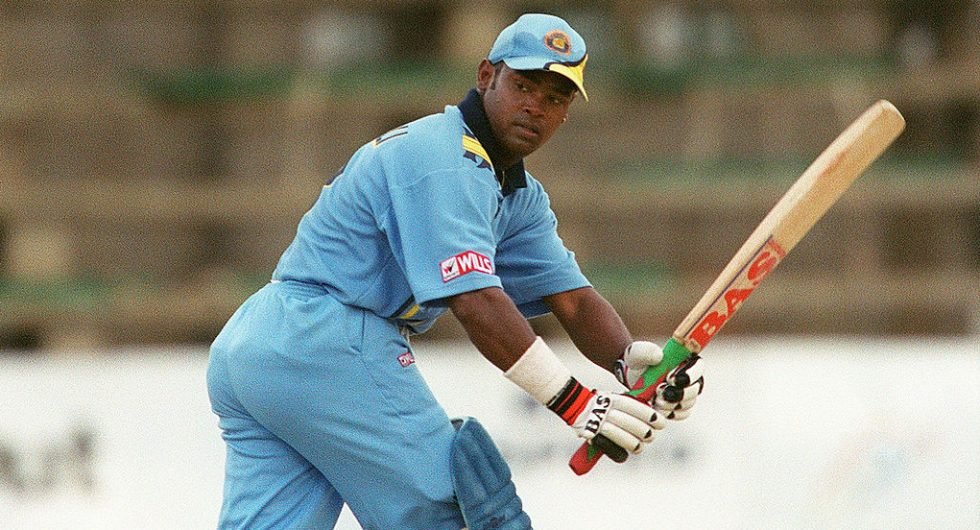The players unlucky to miss out on Wisden’s India ODI team of the 1990s

As part of the Wisden’s 1990s in review, our panelists went about picking Wisden’s India ODI team of the decade and were forced to leave out a few unlucky candidates from the first XI.
Compiling Wisden’s India ODI team of the 1990s wasn’t an easy task; while a number of players were straightforward picks, certain spots resulted in lengthy debates. The following five players were all considered at one point, but lost out to other options who proved to be better picks, when looked at in totality.
All stats refer to the period between January 1, 1990 and December 31, 1999
Vinod Kambli
2,305 runs @ 33.89, 100s: 2, HS: 106
In a career that promised much but fell short of expectations, Kambli played 104 ODIs, 95 of which came in the Nineties. From 1991 to 1995, he averaged over 40 in three calendar years, but scored just two half-centuries from 1996 to 1999, fading away as India turned towards younger options moving into the next millennium.
In this particular team, Kambli was edged out by all-rounder Robin Singh, who, the panel felt, added more value down the order to a star-studded line-up than a specialist batsman or bowler would. Kambli scored the bulk of his ODI runs at positions three and five, which were occupied by more suitable options in this team.
Kapil Dev
79 wickets @ 29.00, BBI: 4-31; 843 runs @ 17.46, HS; 48*
The former India captain isn’t exactly associated with the Nineties, but still played one-third of his one-day matches from 1990 to 1994, before his retirement. The legendary all-rounder would probably have been the first name on the ODI sheet in the Eighties, but even in the twilight of his career, ended as the fifth-highest wicket-taker for India in the 1990s.
When Kapil went the Mankad way…
📍 St George's Park, Port Elizabeth
📹: @80s90sCricketpic.twitter.com/Ucwgv9Zt35
— Wisden India (@WisdenIndia) August 27, 2020
However, for the all-rounder’s spot, he was eclipsed by Manoj Prabhakar, who took more wickets at a better average, strike-rate and economy, and also scored one century and seven fifties in that period; Kapil’s best score in 62 innings was 48*.
Sanjay Manjrekar
1,895 runs @ 33.83, 100s: 1, HS: 105
Manjrekar played 67 out of his 74 ODIs in the 1990s and averaged a respectable 33.83, but his exit in 1996 was closely followed by the emergence of Sourav Ganguly and Rahul Dravid, who became key components of the batting order by the end of the decade, edging Manjrekar out in this team.
Part of two World Cup campaigns (1992 and 1996), Manjrekar batted everywhere from one to eight, playing the majority of his ODI innings at three, where he scored one century and nine fifties. However, it was a position Dravid made his own in the second half of the decade, pushing Manjrekar into the ‘unlucky’ list.
Ajit Agarkar
73 wickets @ 26.41, BBI: 4-35
Agarkar only played ODI cricket in a short one-and-a-half-year period in the 1990s, but still managed to be considered for this team on the back of some eye-catching figures. Agarkar had the best bowling average and strike-rate for an Indian bowler with at least 50 wickets in that period, and picked up three four-wicket hauls, often making an impact with his nippy pace. However, with Javagal Srinath and Venkatesh Prasad largely indispensable, there was no spot left for Agarkar to grab.
Navjot Singh Sidhu
3,270 runs @ 35.93, 100s: 5, HS: 134*
Sidhu was a comfortable entry in Wisden’s India Test team of the 1990s, but a top-three consisting of Sourav Ganguly, Sachin Tendulkar and Rahul Dravid pushed him out of the ODI XI. A blistering batsman when in the mood, Sidhu was India’s sixth-highest run-getter in the period, scoring five of his six ODI centuries in the Nineties, but the quality of batting in the original team, just didn’t allow him to squeeze into the final XI.

